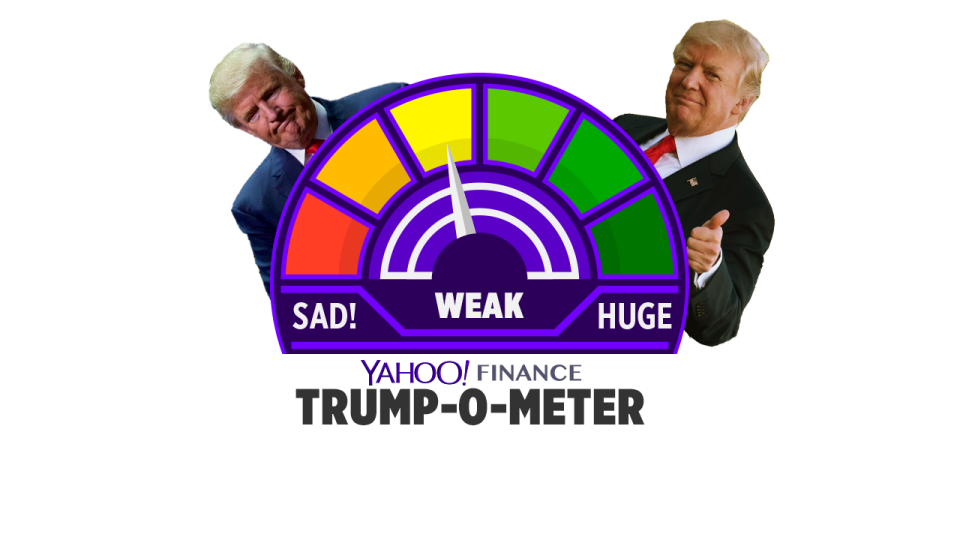This week in Trumponomics: The $1 trillion deficit draws near
The Trump tax cuts have been in effect for 17 months.
Economic growth has been okay, but it’s slowing down. The job market is strong, but hiring dipped in May. New data, meanwhile, show the national debt soaring by margins more typical of a recession than a boom. This suggests the tax cuts will have a transitory impact on growth while making the nation’s long-term debt problem considerably worse.
While lobbying for the tax cuts, which Trump signed into law at the end of 2017, Republicans argued that a sharp cut in the business tax rate—from 35% to 21%–would boost tax revenue through a surge in investment and booming growth. “The plan will pay for itself,” Treasury Secretary Steven Mnuchin said in 2017 as Republicans were drafting the tax-cut legislation.
That isn’t happening. Through the first 8 months of the government’s fiscal year—which begins in October—the Treasury Department borrowed $739 billion—up from $532 billion during the same period the year before, a 39% increase. Unusual timing of some government payments made the May deficit larger than it would otherwise be, which means the June deficit could be lower than normal.
Still, the gap between spending and revenue should be shrinking, not growing. For these reasons, this week’s Trump-o-meter reads WEAK, the third lowest grade.

Federal revenue during the 8-month period rose 2.3%, but spending rose 9.3%, accounting for the larger deficit. The national debt—the sum of all annual deficits—now exceeds $22 trillion, which is larger than the nation’s annual economic output.
[Check out the Yahoo Finance Trumponomics Report Card.]
Some important sources of revenue fell because of the tax cuts. Revenue from business taxes fell by 8.6%, from $124 billion during the first 8 months of 2018 to $113 billion for 2019. Tax payments by individuals rose by 1.5%, from $1.14 trillion to $1.16 trillion. Individual income tax payments now account for 10 times as much federal revenue as business taxes.
In May, the Congressional Budget Office forecast a deficit of $896 billion for 2019. That now seems like an undershoot. If federal borrowing continues on its current pace, the deficit will top $1 trillion this year, for the first time since 2012. The deficit should be going down, not up, when the economy is healthy. During the late 1990s, when the unemployment rate was nearly as low as it is today, tax revenue soared and the government ran a surplus for four years in a row, taking in more money than it spent. That suggests a hollowness to the current economy.
The Trump tax cuts have turned out to be unpopular, because voters think they helped businesses and the wealthy more than the middle class. Data bears that out, since huge cuts in corporate taxes haven’t been trickling down to workers through notably higher wages or improving living standards. Some supporters of the tax cuts say it’s too early to see results that could take years to materialize, but voters will render judgment as early as November 2020. Trump will need something to show for his tax cuts soon.
Confidential tip line: rickjnewman@yahoo.com. Encrypted communication available. Click here to get Rick’s stories by email.
Read more:
How China could meddle in the 2020 election
6 ways to fix trade without Trump’s damaging tariffs
Trump has no choice but to land a trade deal with China
Your paltry savings from the Trump tax cuts
Medicare for all won’t work. This might
Rick Newman is the author of four books, including “Rebounders: How Winners Pivot from Setback to Success.” Follow him on Twitter: @rickjnewman
Read the latest financial and business news from Yahoo Finance


